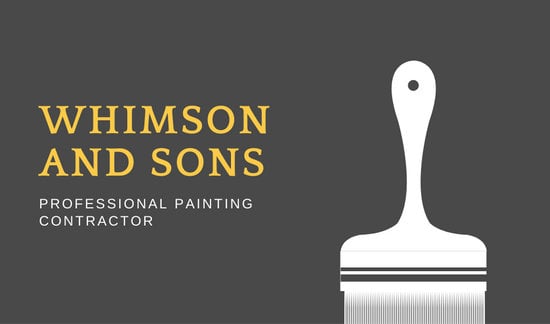Comprehending Seasonal Influences On Commercial Exterior Painting: Necessary Expertise For Success
Comprehending Seasonal Influences On Commercial Exterior Painting: Necessary Expertise For Success
Blog Article
Written By-Aguilar Skafte
When you're preparing a commercial outside painting project, seasonal variables can make or damage your results. You'll wish to consider how temperature and moisture impact paint application and drying times. Choosing the ideal period can ensure your paint sticks appropriately and lasts much longer. But which seasons are really the very best for this sort of job? Let's discover the key elements that can impact your job's success.
The Influence of Temperature on Paint Application
When you're planning a business external paint project, the temperature can substantially affect exactly how well the paint adheres and dries.
Ideally, you wish to paint when temperatures range between 50 ° F and 85 ° F. If it's also cool, the paint may not heal correctly, causing problems like peeling off or splitting.
On the flip side, if it's too warm, the paint can dry too swiftly, avoiding correct attachment and leading to an irregular surface.
You ought to likewise take into consideration the time of day; morning or late afternoon uses cooler temperature levels, which can be a lot more favorable.
Always examine tulsa painters for the specific paint you're using, as they typically provide advice on the ideal temperature range for optimum results.
Humidity and Its Result on Drying Times
Temperature isn't the only environmental aspect that influences your business exterior paint project; moisture plays a considerable role also. High humidity degrees can decrease drying times substantially, impacting the overall quality of your paint job.
When the air is saturated with wetness, the paint takes longer to heal, which can lead to issues like bad adhesion and a higher risk of mold growth. If you're painting on a specifically humid day, be prepared for extensive wait times between coats.
https://landenctdmv.dailyblogzz.com/35626563/uncover-the-possibility-of-environmentally-friendly-alternatives-in-business-outside-painting-to-revitalize-your-service-and-benefit-the-neighborhood-but-what-real-results-will-your-options-have to check neighborhood climate condition and strategy as necessary. Ideally, aim for moisture degrees between 40% and 70% for optimal drying out.
Maintaining these consider mind guarantees your task remains on track and supplies a lasting surface.
Best Seasons for Commercial Outside Painting Projects
What's the most effective season for your industrial external paint jobs?
Springtime and very early autumn are usually your best options. Throughout these periods, temperatures are moderate, and moisture levels are commonly lower, creating perfect problems for paint application and drying.
Stay clear of summertime's intense heat, which can trigger paint to dry also promptly, resulting in inadequate adhesion and coating. Likewise, winter season's cool temperature levels can prevent appropriate drying and curing, running the risk of the long life of your paint work.
Aim for days with temperatures between 50 ° F and 85 ° F for optimum outcomes. Bear in mind to inspect the local weather report for rainfall, as wet conditions can ruin your project.
Preparation around these elements ensures your paint task runs smoothly and lasts longer.
Final thought
In conclusion, preparing your industrial external painting jobs around seasonal factors to consider can make a considerable difference in the result. By organizing job during the optimal temperatures and moisture degrees, you'll make sure much better bond and drying out times. Bear in mind to keep an eye on neighborhood weather report and pick the correct time of year-- spring and early fall are your best bets. Taking these steps will certainly assist you accomplish a sturdy and expert surface that lasts.
